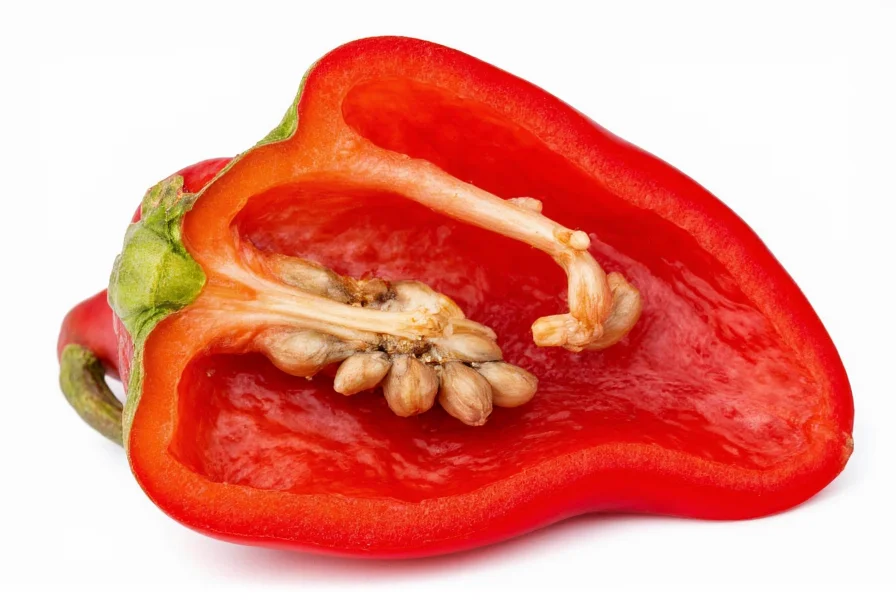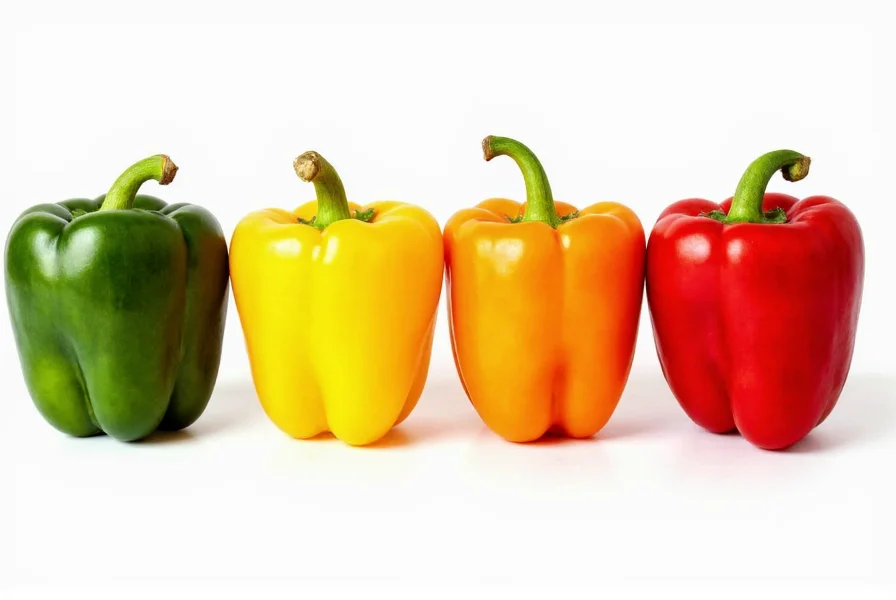Understanding the classification of red peppers requires examining both botanical science and culinary tradition. This distinction explains why you'll find conflicting information about whether red peppers are fruits or vegetables. The answer depends entirely on the context in which you're asking the question.
The Botanical Truth: Why Red Peppers Are Fruits
From a strict botanical perspective, red peppers (Capsicum annuum) unequivocally qualify as fruits. In plant biology, a fruit develops from the ovary of a flowering plant and contains seeds. Red peppers form after the pepper plant's flowers are pollinated, and the mature pepper pod houses numerous seeds in its interior.
This botanical definition places red peppers in the same category as tomatoes, cucumbers, eggplants, and squash—all technically fruits despite their common culinary classification as vegetables. The confusion arises because everyday cooking terminology doesn't align with scientific classification.

Botanical vs. Culinary Classification
| Classification System | Definition of Fruit | Red Pepper Status |
|---|---|---|
| Botanical | Structure developing from flower ovary containing seeds | Fruit |
| Culinary | Sweet plant part typically used in desserts or snacks | Vegetable |
| Nutritional | Based on vitamin/mineral content and usage patterns | Vegetable |
The Historical Context of Produce Classification
The fruit-versus-vegetable debate isn't unique to red peppers. In 1893, the U.S. Supreme Court case Nix v. Hedden famously ruled that tomatoes should be classified as vegetables for tariff purposes, despite their botanical classification as fruits. This legal distinction created precedent for treating certain botanical fruits as vegetables in commerce and cooking.
Red peppers followed a similar path. Though botanically fruits, they've been grouped with vegetables in agricultural statistics, culinary education, and nutritional guidelines for over a century. The U.S. Department of Agriculture consistently categorizes peppers as vegetables in dietary recommendations.
Nutritional Profile of Red Peppers
Red peppers offer impressive nutritional benefits regardless of their classification. They're particularly rich in:
- Vitamin C (providing over 150% of daily needs per medium pepper)
- Vitamin A (from beta-carotene, which gives red peppers their color)
- Vitamin B6
- Dietary fiber
- Antioxidants like lutein and zeaxanthin
Interestingly, red peppers contain significantly more nutrients than their green counterparts because they've been allowed to fully ripen on the plant. This extended ripening period increases their sugar content slightly while dramatically boosting their vitamin levels.

Practical Implications for Cooking and Nutrition
Understanding red pepper classification matters for more than academic curiosity. The fruit classification explains why:
- They develop increasing sweetness as they ripen from green to red
- They contain natural sugars that caramelize beautifully when cooked
- They pair well with both savory and slightly sweet flavor profiles
- They're often used in fruit-like applications such as stuffed peppers
From a nutritional standpoint, whether you consider red peppers fruits or vegetables doesn't affect their health benefits. What matters is incorporating these nutrient-dense foods into your diet regularly. Their versatility makes them valuable in countless culinary applications—from salads and stir-fries to roasted vegetable medleys and stuffed main dishes.
Common Misconceptions About Produce Classification
Many other common foods share red peppers' classification confusion:
- Cucumbers - Botanical fruits, culinary vegetables
- Zucchini - Botanical fruits, culinary vegetables
- Avocados - Botanical fruits, often used as vegetables
- Rhubarb - Culinary vegetable though botanically a vegetable (the stalks are used, not the fruit)
This pattern reveals that culinary classification typically depends on flavor profile and usage rather than botanical accuracy. Sweet-tasting plant parts with seeds usually become fruits in cooking terminology, while savory options become vegetables regardless of their botanical origins.
Conclusion: Embracing Both Perspectives
So, is a red pepper a fruit or vegetable? The scientifically accurate answer is that red peppers are botanically fruits but culinarily vegetables. This dual identity isn't a contradiction but rather reflects how different fields develop specialized terminology for practical purposes.
When discussing gardening or plant biology, refer to red peppers as fruits. When talking about cooking, nutrition, or meal planning, calling them vegetables makes perfect sense. Understanding this distinction helps you navigate both scientific discussions and everyday kitchen conversations with accuracy and confidence.











 浙公网安备
33010002000092号
浙公网安备
33010002000092号 浙B2-20120091-4
浙B2-20120091-4